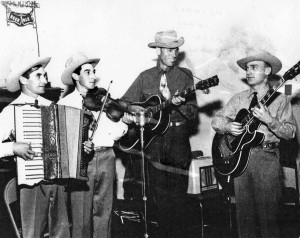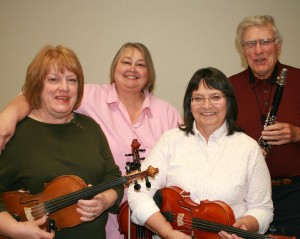By Ladd Stevens
I grew up in the fifties and sixties. Back in those days, not everyone who graduated from high school went to college. Some of my classmates went into the trades: you know, became plumbers, carpenters, electricians. While it was important that you got a good education and learned your three R’s – reading, ‘riting, ‘rithmetic – there was no guarantee about going to college or even that going to college was necessarily better than apprenticing yourself to a master tradesman. People to build your houses and office buildings were as important as someone to teach your kids. Maybe it was the post World War mentality: Everyone pitched in and did what needed to be done to help America get back on its feet and prosper.
My parents came from poor immigrant families, Polish and German, and went through the depression. My father was from a family of fourteen. There was never any doubt that both my sister and I were going to college, because that’s what our parents wanted. The difference was my sister was “college material” to use a phrase of the time, and I was less so. I was a mediocre student in high school and even got a ‘c’ in shop – thus the trades were out. My sister did very well and ended up at an Ivy League school – more power to her, she earned it. Eventually I did go to college and graduated. Not an ivy.
When my wife and I moved here three summers ago, we knew about the Collegiate Peaks, some of them named after Ivy League schools. We can see three from our back deck: Princeton, Yale, and Columbia. The first fall we climbed Mt. Elbert, Colorado’s highest fourteener. When we got to the top it was winter: cold, windy, snow on the ground, yet the sky was clear and a brilliant blue. I made it, but it wasn’t easy. For about the last thousand feet or so, I walked very slowly and never really seemed to catch my breath. At the top, my wife felt exhilarated, flinging her arms to the sky and giggling whereas I felt as if I had just walked fourteen miles with a forty pound pack. Glad I made it, but had no interest in doing another one for a long time. Don’t call me, I’ll call you.
This summer, despite my best efforts at screening them, the calls came through anyway especially from friends living at sea level. My wife refers to them as flatlanders, part of her search and rescue parlance.
“We want to visit and climb a fourteener. When can we come?”
“Getting to the top of a fourteener is on my bucket list!”
“A distant cousin on my mother’s side went to Princeton.”
I started calling one end of our house the guest wing, but it’s really just the other end of the house: “Yes, we do have availability on August 28-31, which fourteener would you like to climb?”
Unfortunately, most of these folks, god love ‘em, have no idea what’s involved in getting up one of these mountains – the gear, preparation, potential for altitude sickness, and of course the weather risk.
I did have a good feeling, however, about our friend Jim, a flatlander for sure, living right on the Pacific Ocean. He’s a retired firefighter, EMT, in good shape at fifty-seven, willing to pack the necessary gear and eager to get after it. My wife and I had several discussions about which fourteener to take him up. We finally decided on Huron Peak due to its scenic qualities and well-marked trail. “A walk-up,” she said.
While she was in Florida, I even took the time to hike the first 1000’ or so of the trail, because I knew we would be walking in the dark with headlamps for ninety minutes, and I wanted to make sure we could safely follow the switchbacks. My idea was to arrive at the trailhead at 5AM and be on top by 9:30 to minimize the weather factor.
When my wife returned from her trip, the plan changed. She said it takes too long to drive to the Huron trailhead, didn’t want to start hiking at five, and that we were climbing Yale instead at six. Okay then.
The next day, I helped Jim acclimate by taking him on a three mile hike from Cottonwood Pass along the Continental Divide starting at over 12,000’. Just a short out and back to take in some of that oxygen-deprived air.
The following morning at six we were on the trail, packs full and headlamps blazing. You start at around 9,900’ and climb 4,300’ to get to the top at 14,196’. The first two miles or so, you only ascend 1,300’, but in next two you climb 3,000’. Initially we were hiking together and I’m fine up until around the 12,500’ mark, when my breathing becomes heavier and heavier. The trail is very steep, the altitude high, and the looming pitch to the saddle just below the summit looks formidable.
Jim and my wife begin to put some distance between us. I’m having trouble catching my breath even when I stop, and I’m just trying to make it from switchback to switchback. Occasionally, my wife calls down to me: “Pudgesicle, are you okay?” Not loverboy or studmuffin, but “pudgesicle.” Oh well, call me anything you want, but don’t call me late for dinner or especially cocktail hour.
As she and Jim crest over the next rise, I lose sight of them. Seems like every cell in my body is telling me to stop, but the Pudgesicle knows that even walking slowly, he will eventually get there. Finally, I reach the 13,800’ saddle where you hang a right to the southeast and then scramble over scree and large boulders for a few hundred yards to reach the summit. Looking up at the size of the boulders, I decide to drop my pack and hiking sticks after first putting on several layers of protective clothing – very windy, chilly and clouds are starting to form. Pack will weigh me down and hiking sticks get in the way.
I start to scramble over the rocks, and soon find my wife and Jim waiting for me so that we can ascend together. I’m aware as I’m going up and over these large boulders that there’s a real danger in coming down: Tired, high altitude, may get damp and slick, and one slip or misstep could result in a serious accident.
When we reach the summit Jim is excited, high-fiving and congratulating us. While I felt happy for myself, I felt more thrilled seeing his joyous reaction – it somehow made it all worthwhile. And the views were magnificent: 360º of glorious mountain scenery!
The way down, while long, was uneventful: just a little rain and one slip on some loose scree resulting in a sore butt – mine – the next day. I may not have gone to an Ivy, but Yale was achieved. My wife is climbing Columbia in a couple of days with another friend visiting from California. There’s a way you can bushwhack up to the summit along a ridge line, a route she’s eager to try. I mean, why go on a developed trail when you can bushwhack? I say, honey, go for it. Me, I’m going to savor my hard-earned degree from Yale and look towards Columbia another day.
Ladd Stevens is a raconteur and rogue retiree who roams the mountains of the Arkansas River Valley looking for stories.


